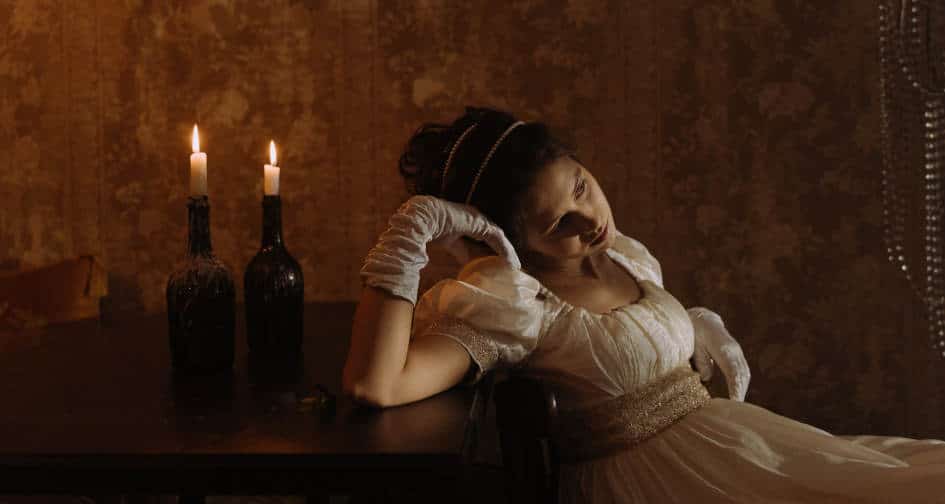Who are Faro ladies? The world has come a long way since the 18th century when women, especially aristocratic women, were not allowed to gamble. Social structures favored only men and prohibited women from gambling.
While there were many restrictions for women, gambling was one of the most frowned upon. Women ran the risk of being cast aside if they were caught gambling. Women gambled privately in specific houses even though society considered gambling as inappropriate for them.
Apart from gambling, there were many other social activities these aristocratic women could enjoy in the private houses. These women gambled primarily on Faro tables.

Who are Faro Ladies?
A Faro table has been in use since the 17th century to play Faro card games. In the private entertainment houses of the 18th century, a group of aristocratic women became popular for playing the Faro card game. People knew them as Faro Ladies or the Faro Daughters. The most popular Faro Ladies were Lady Sarah Archer, Lady Buckinghamshire, Mrs. Albinia Hobart (later), Lady Elizabeth Luttrell, Mrs. Sturt, and Mrs. Concannon. These women made the headlines of almost every major newspaper in the 1790s. These women had two personalities. During the day they were responsible, law-abiding members of society who followed societal norms. During their leisure, they went to private houses where they played their Faro card games and enjoyed themselves with their pairs.

Perception of the Faro ladies
There isn’t a lot of information about the Faro Ladies because, through the course of history, they have lacked the recognition they deserve from modern-day feminists.
The society tagged these women as immoral and irresponsible because they enjoyed gambling. These women broke the stereotypes and suffered socially for this. People criticized them also because of the nature of the Faro game. Society saw the Faro game as a cheaters game.
Notwithstanding, history has shown that playing Faro in these private houses had a significant role to play in how aristocratic women developed an interest in politics. When they gathered to play, they discussed several social and political issues.
How Does The Faro Card Game Work
The Faro card game is a descendant of poker which involves the use of 52 cards in a deck, betting chips, case-keeps, a dealer’s box, and coppers. The cards all have assigned values from 2 to 10 and the others are ranked in alphabets A, K, Q, and J.
People still appreciate Faro even though it’s no longer as popular as before. This is because of its historical significance.
Just like in many other card games, the dealer in Faro is also the banker who shares the chips for the players. The Faro table is designed uniquely and it is usually covered with a green cloth. Apart from the dealer, another employee of the casino or a non-player will also be present to take care of the case-keeper.
The dealer shuffles the cards and shares it with players. Some cards expose their value while others hide theirs.
The case-keeper’s job would be to push a bead toward a card right after it has been revealed. The beads serve as a formal indication, tracking the progress of the game. When the round is over, all the beads will be retrieved by the case-keeper. If there is no case-keeper on the table, they will keep track of the cards with a cue sheet. All players participate and place bets before the game starts. If you don’t place your bet in the beginning, you can’t play.
Faro Betting
Just like with other card games, there are limits when it comes to playing Faro. The limits are classified into two groups, running limits and plain limit. The running limit refers to 4x the plain limit and the plain limit is the maximum amount wagered. Simply put, if your plain limit is $10, your running limit will be $10 x 4 which is $40. In every Faro game, the dealer takes charge of imposing the running limit. Players who win and want to keep betting are limited to wagering the winning limit of the previous game. If the player continues to win, the maximum staking amount will keep increasing. There are 25 betting rounds in total for each game.
Playing the game
Playing the game itself is relatively easy. After the dealer shuffles the cards, they place them on their side of the table, typically in the center of the dealing box. The card exposed first is soda. Note that the soda card isn’t used for anything special in the game. It is simply pushed aside to the left side of the board. The soda and every other card places the loser card between them.
The next crucial card is the winning card which is also placed face up on the board. The last card that revealed is the hock. The dealer keeps the bet when a player loses. If the player gets a winning card, they win. On the other hand, when a winning and losing card is the same in one round, it is called a split and the dealer gets to keep 50% of every bet placed on the card. The cycle continues until the cards run out and the dealer has to reshuffle the deck.
The Legal Admonishment of the Faro Ladies
Controversy surrounded gambling in the 18th century and this included Faro. The interest aristocrats had in playing Faro became a topic of discussion among middle-class members of society. The middle-class depended on lots of credits to survive. So, they agitated for repercussions for aristocrats who gambled with money.
The press also had a lot of negative things to say about the game and those who played it. Eventually, the government declared Faro as illegal and sanctioned those caught playing it. Anyone found guilty of playing Faro paid a £50 fine while anyone who owned a Faro table paid a £200 fine.
These fines discouraged people from playing Faro but it didn’t eliminate the problem. The Faro ladies and many others continued to seek out the game in private houses. In 1796, the government took more extreme measures when Henry Weston tricked the bank into giving him a loan of £100,000 which he eventually lost playing Faro. The inevitable legal admonishment of the Faro ladies became a historic event. The public shamed these women and the law prosecuted them, all for nothing more than an interest in gambling.
Mob attack and negative press of the Faro ladies
Lady Sarah Archer and Mrs. Hobart were both victims of an attack by an unruly crowd in 1796. A Faro Ladies party brought about the loss of a Faro bank a few months later in 1797. This caused a lot of outrage in society again. This led to the unfair legal admonition of Mrs. Sturt, Lady Buckinghamshire, Henry Martindale, Mrs. Concannon, and Lady Elizabeth Luttrell. A magistrate court in Marlborough Street heard their case. Two men presented the testimonies. Lady Buckinghamshire had once employed them as footmen.
The court then fined the ladies. Martindale paid £200 while the other women paid £50 each. Only Mrs. Concannon didn’t babe to pay. The witnesses claimed that the women hosted many private parties and enjoyed the Faro card game with their friends while they waited for them in the surrounding.
The press didn’t show mercy to the Faro ladies at all. Almost every major publication house between 1796 and 1768 had negative things to say about the Faro Daughters. The press emphasized on so-called political, social and moral problems and pinned this on the women gambling. Newspapers added their faces to caricature prints further allowing everyone to know what had happened.
Thankfully, things have changed significantly since then.

Bottom line
Who are Faro ladies? These women dared to use gambling as a form of independent income. Presently, women no longer have to abide by the unrealistic standards of society. They have come a long way from not being able to vote or gamble. Gambling is no longer illegal in most parts of the world. Women-gamblers walk freely into any land-based casino without prejudice. Even if there is still some discrimination against female gamblers in developing nations, things are still much better than they were in the 18th century.



